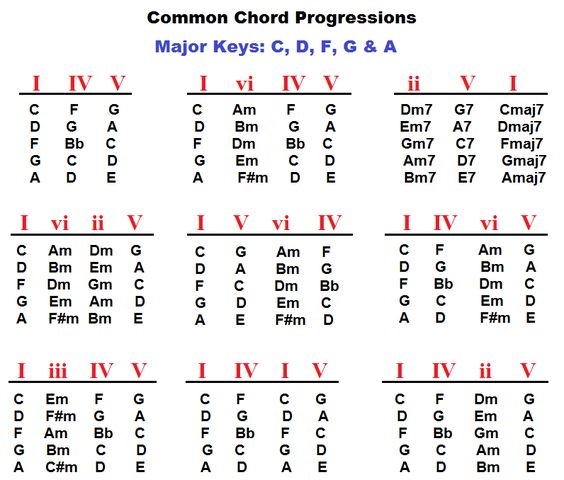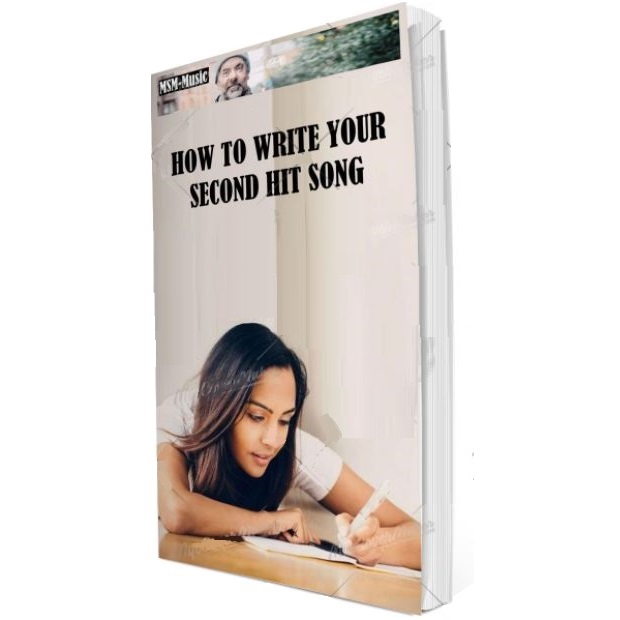Now, you’ve written that first song and started writing the next. And all the other ones for that next album.
Where to begin? How to get inspiration? How to wrap it up?
The best way is to write a lot of songs and eventually you know the racket. But here’re some tips about how to begin.
Start collecting ideas
Record the hooks that comes into your mind instantly on the smartphone’s voice mail. If you wait until you’re in the studio or at home the moment will be lost, the idea will be gone.
Write down lyrics ideas instantly on your phone or on a piece of paper. Same thing here. Always have your phone or paper and pen ready. If you read something or someone tells you something that gives you an idea it’s OK to “collect” that idea. It can be a catchy phrase or a heartbreaking story. If you’re a songwriter you can tell your friends that something the say might end up in a song. It’s of course not OK to steal someone’s lyrics or poem though. It’s not OK to “borrow” a line or part of a melody. Today a song will immediately be recognized as stolen if a rightful songwriter isn’t credited. If it’s a hit it will be kept in the air but the real songwriter will be credited for a portion or the whole song. A modern example is “7 rings” that was released as an original song but is now 90 % credited to the writers of the musical Sound and Music. If it’s not a hit it will probably be taken down from the air if discovered.
DIY or together with someone
Often you write your song 90 % ready. You need that last line in the lyrics or that bridge in the song. Help from outside can be handy. A second pair of eyes or ears can help. But sometimes it sucks to go to contract signing with something you’ve done 90% of and then have to share royalties and copyrights with someone who wrote one line. In those cases, it might be better to finish it yourself. When a song is picked by a producer and another artist, they probably want to add something into your song and also have piece of the pie. So the song might be changed to fit them. Then you might say; Heck, since the artist wants to change the song anyway, why struggle with the last 10%? Well, most often the producer and artist will not touch a 90% finished song.
If you want to collaborate with someone it should be someone you trust and want to have a long term relationship with. Someone who’s feedback will improve the song. A good example is Lennon/McCartney of the Beatles. They labeled all their songs Lennon/McCartney, but most songs were written by either Lennon or McCartney. But after playing the song to each other the song would develop a little and also merge into their common sound.
Structure of the song
The melody “should” have some verses and a chorus. Not more than 4 verses. It can also have a bridge with different chords and melody to make it more interesting. It can also have other parts such as intro, outro or interludes. There are no rules but your listener will expect a song to follow some basic structure and also to be between 3 and 5 minutes. Again, no rules here but my tips below are based on such a template song.
How to start
Start with what comes most natural and easy to you.
1. Start with the melody
If you have a melody you can go straight to the hook and try to find lyrics for the hook part. When you have catchy lyrics to your hook, you will probably have your title and parts of the chorus ready. Then you can build the lyrics around that.
2. Start with the lyrics
If you have lyrics and want to find a melody, look for the most important line of the lyrics. The one that summarizes the story song or the feeling of the song. Use that line and try to find a catchy hook to it. Now you have your hook that you can build the song around. Try to build up the melody to the hook.
3. Start with a beat
Internet is full of handy beats to use free or for a small charge. Many DAW:s like Garageband and Bandlab offers free loops for you to use. A beat is a chord progression. 3 or 4 chords and maybe a hook as well. Most beats doesn’t have more so if you want to use only a beat you will have the same chord progression in the verses, the chorus and in other parts of the song like the bridges, intros, outros and interludes. This might be boring for the listener. So, if you use a beat my advice is to change the beat in the different parts of the song.
Writing the melody
Try to make the chorus the catchy part. If it’s the opposite maybe you should consider switching. Also, a good tip is to have the verses a bit lower and the chorus a bit higher. Write the melody in a key that fits your voice. You should be able to sing it. If someone else is the singer, you can change the key later to fit that singer. Use some chords you know on the guitar or piano if you play and build around them. There are many rules about chord progressions, but you don’t have to follow them. If it sounds OK, it’s OK. If you have a beat, build the melody around that beat but try to have different chord progressions in verses and chorus. Commonly used progressions in the key of C are C-F-G-C or C-Am-F-G or C-Em- F-G. Dm and Bb can also be used. But again; you mustn’t follow the rules. If you use A (Major) instead of A minor in the above chord progression it will make it more interesting but not so common. You can also write the melody with a simple progression and the get help from a producer a add some extra chords.

Writing lyrics
Writing lyrics is a pain for many songwriters. Here are some tips on how to do it.
Start with the hook that will also be the title of the song
Write one line that will summarize your song and that will also be the title. This will also be the hook the song.
Write the chorus
The hook will be part of the chorus so write some more lines to finish your chorus. The hook can be in the beginning or the end of the chorus or be repeated. Toto’s “Roseanna” has “Meet you all the way” four times in the chorus and two “Roseanna”. It can start or finish a number of lines of the chorus. The lyrics of the chorus should be simple and catchy. The singer shouldn’t need to read the lyrics while singing the chorus. In that case it’s not simple and catchy enough.
1. Write the verses about a story
Continue with the verses. They can be a story you want to tell. The story can be about me (the songwriter) about you (your friend, lover, secret lover), about her/him (also a friend, lover secret lover, victim, funny guy) or about someone else you heard about and want to tell a story about. Your own experience or someone else’s is OK and good to use and will make the song more interesting. But if you don’t want to reveal such things about your self or someone you know; you can still use the story and write is as fiction about a fictive person. It’s also OK to mix reality and fiction to write a better story. Everything is “allowed”, it’s just a song. You can also say that the song is bare fiction if someone wonders if it’s about you or someone else. Paul McCartney’s “She’s leaving home” is good example. Suzanne Vega’s “Luka” is an other one. A story can be written like this:
- Verse 1: Something is happening
- Verse 2: What happened before
- Verse 3: What happens then
- Bridge: How to solve it.
2. Write about a feeling
Write about a feeling you have or someone else has. Paul McCartney’s “Yesterday” is a good example.
- Verse 1: The feeling
- Verse 2: How did you get the feeling. What was it like before?
- Verse 3: Life without the feeling or a changed feeling
3. Write about nothing
Just write poetic lines that are beautiful but doesn’t make any sense. In the sixties different technics was used by poets and songwriters like “Cut up technique”. Cut up technique is to take a couple of book pages and cut them in half from top to bottom. Then try to paste different halves together to make something out of it. Or to cut out words or phrases from a text and try to paste them together to something comprehensible and poetic. John Lennon’s “And Your Bird Can Sing”
Writing tips
- Melodious. Try to write the lycrics melodius or with musicalty.
- Rhythmic. Try to write singable or rapable. The lyrics are made to fit a song and are not just a poem. You should be able to sing the lyrics without stumble or skipping syllables. Especially in rap music, words with three or four syllables can be very rhythmic. Like Laureen Hill’s: “While you’re im-i-ta-ting Al Capone, I’ll be Nina Simone, and de-fec-ting on your mic-ro-phone.”
- Structure. Most songs have verses and chorus. Many have other structured parts that repeat. The repeated parts works as mantras to help the listener get familiar with the song. The different parts like verses or lines lines should be equal in length and number of syllables. In Lady Gaga & Bradley Cooper’s Shallow the verses are similar and many lines repeat.
- Compactness. You have to tell something with very few words. Try to be short and precise. The lines shouldn’t be too long. Five to seven words per line. Number of lines shouldn’t be more than four in a verse.
- With Silence. Don’t be afraid of silence. The song should have air between the vocal lines so the listener get tome to reflect. Don’t try to fit in a novel.
Example: Paul McCartney’s “Yesterday”. Especially the first line “Yesterday”. Its melodious. It’s rhythmic. You can’t change it to Monday or February, then the rhythm is gone. It’s compact. One sentence with one word. Then silence. And still; It follows all those rules and it’s still very poetic. It’s both something definite but something that’s gone.
Quick tip:
Here’s a quick tip how you can start practicing writing songs.
Start by picking a song you like. Write new lyrics for it. After that, write a new melody to your new lyrics. By doing it this way you quicky learn how to build the lyrics and build the melody.



